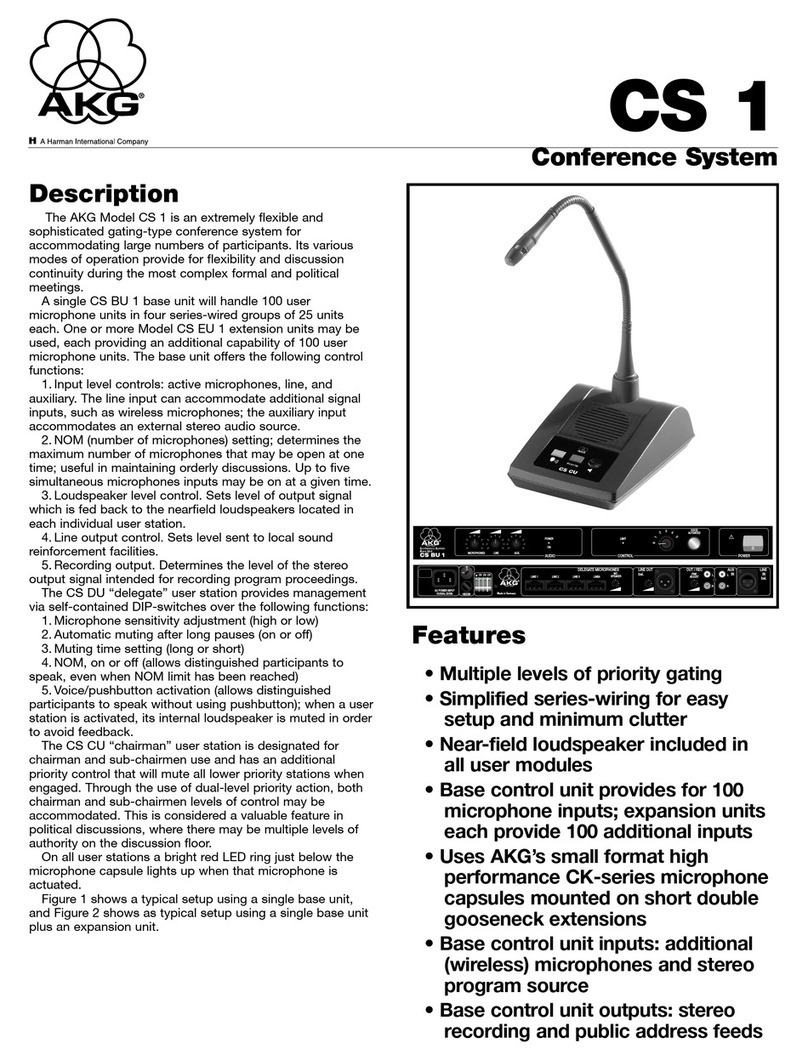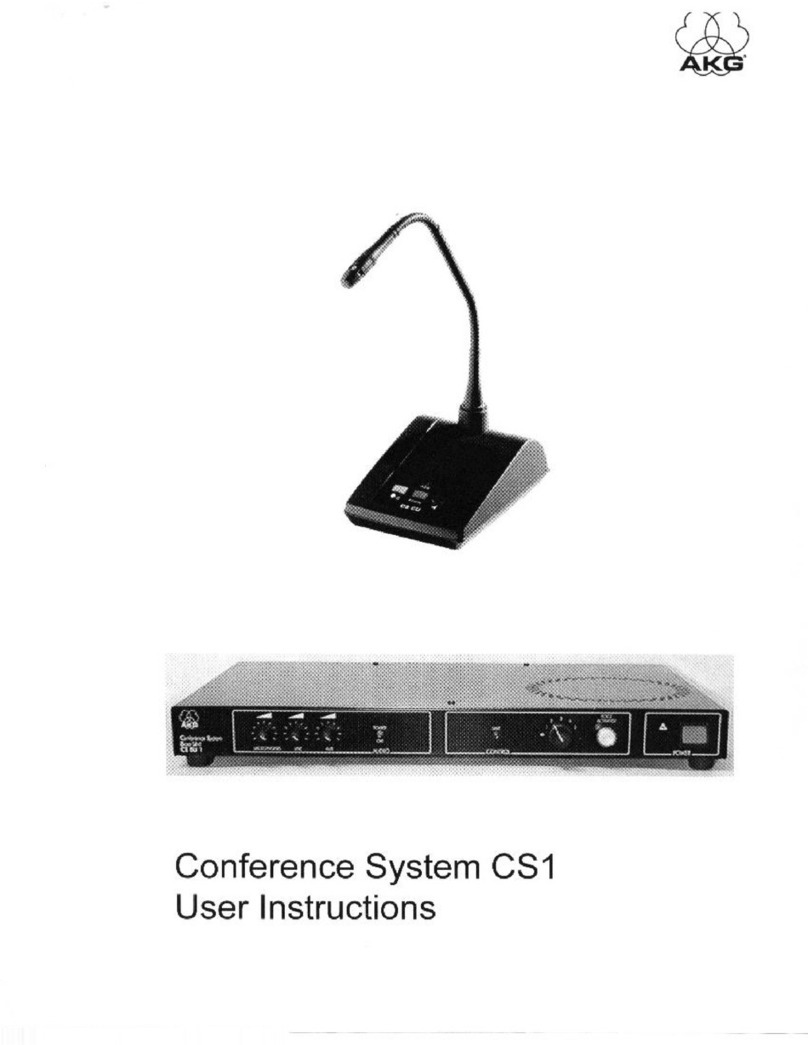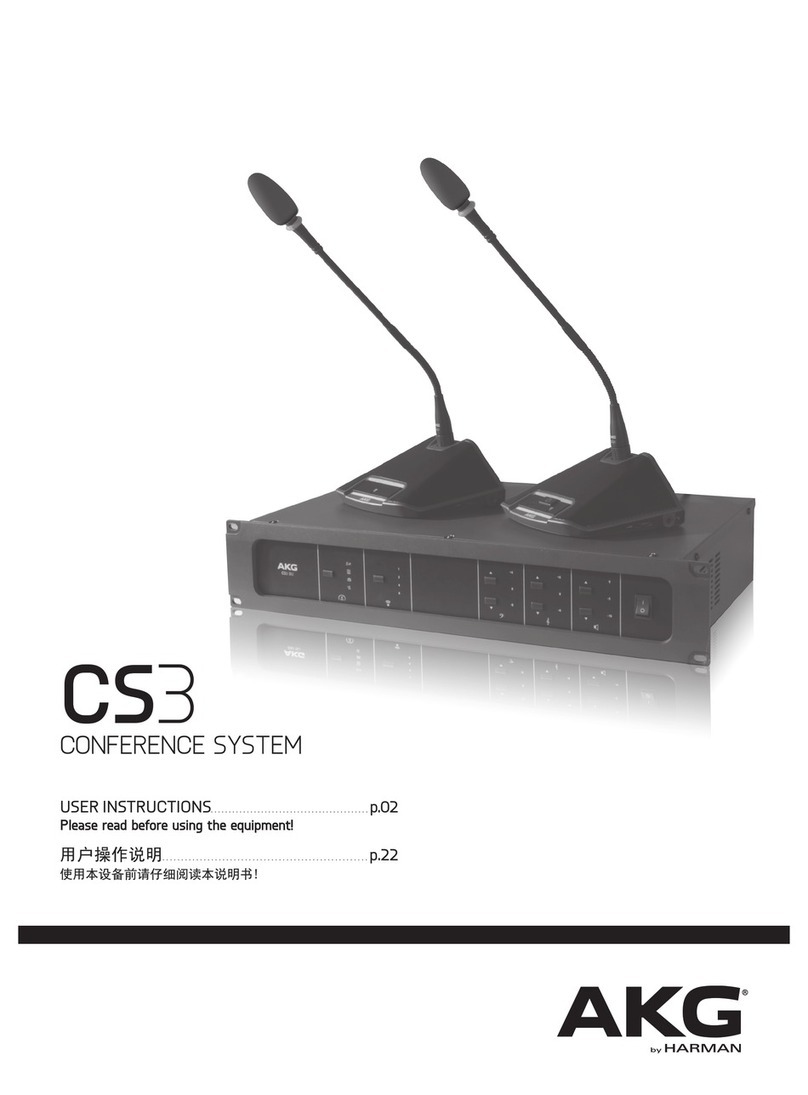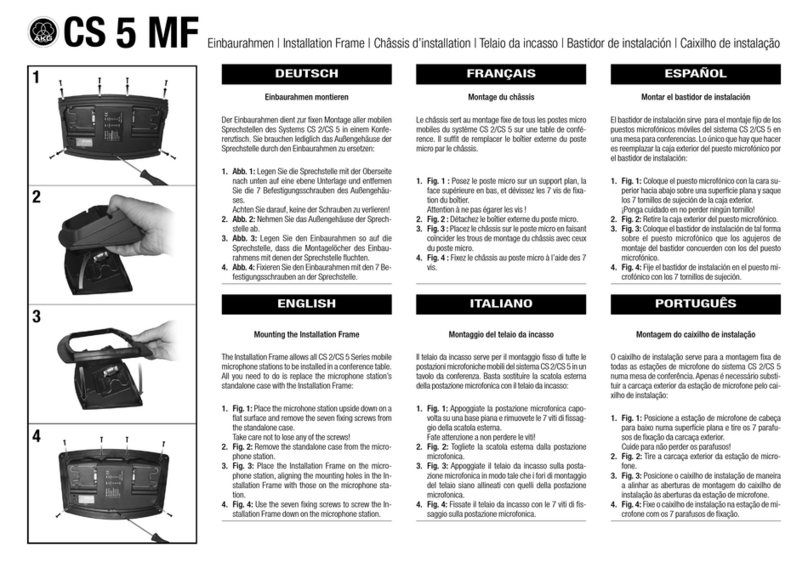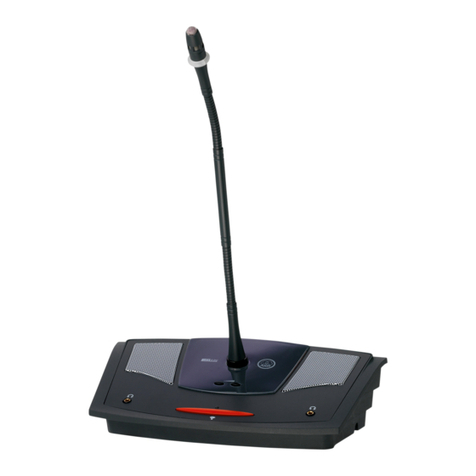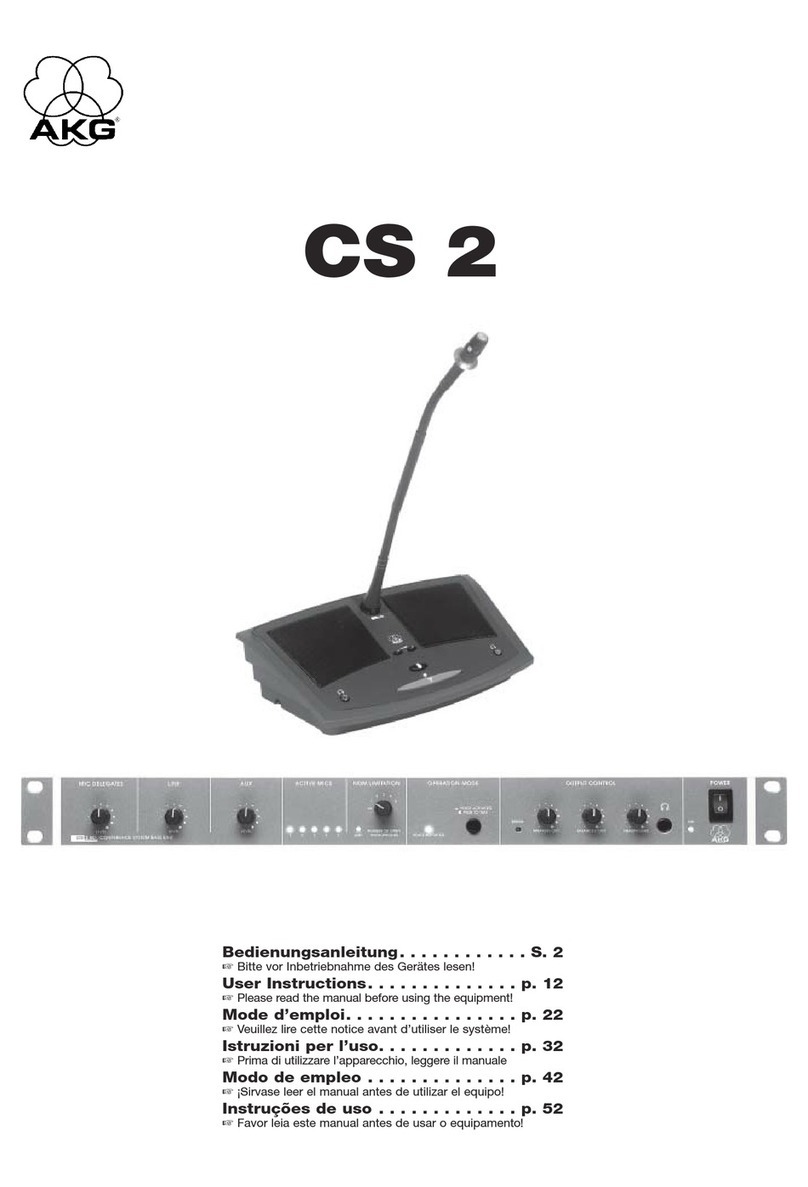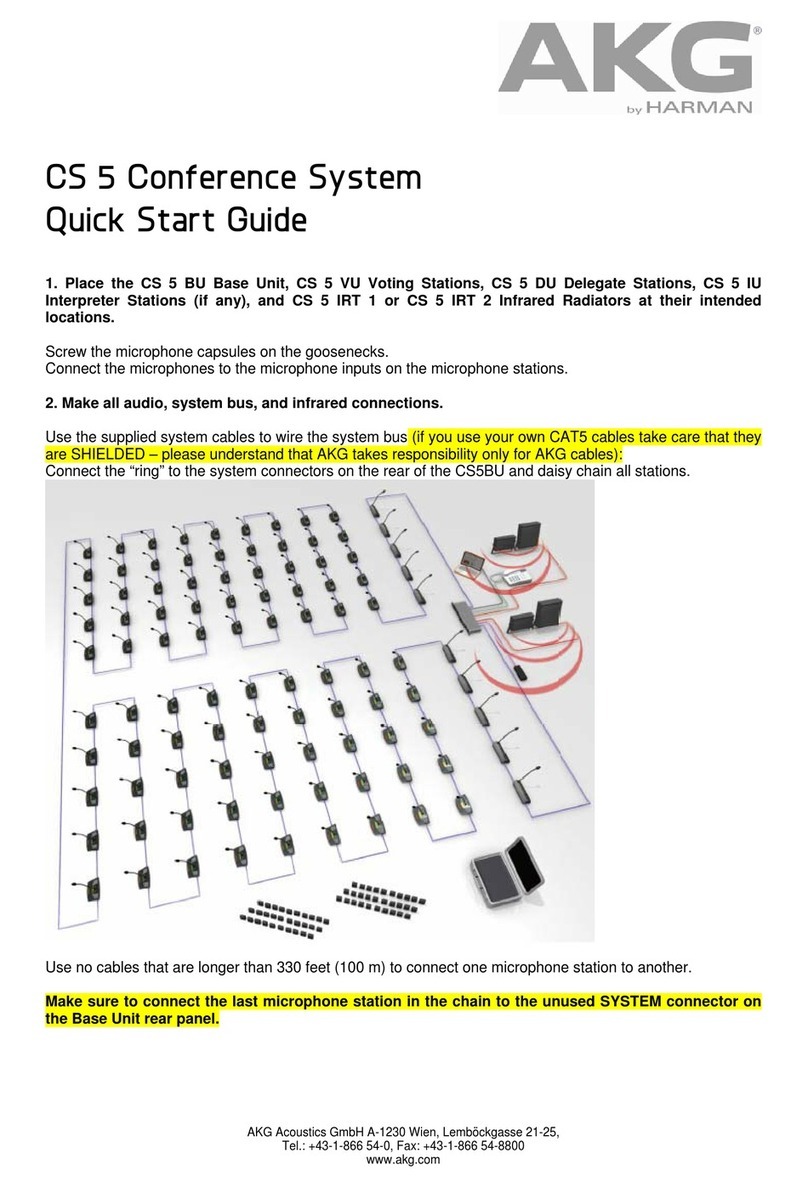CSX IRS10 Manual V1.1 5 / 32
1. GENERAL INFORMATION
1.1. INTRODUCTION
CSX IRS10 digital multichannel infrared system (Diagram 1) is primarliy used in multi-lingual
meetings, conferences and tour guide applications. The CSX IRS10 includes the components CSX
BIR10, CSX IRR10, CSX IRT3, CSX IRT4 units. It can be used as stand alone system, but also in
combination with the CS5 conference system. When using the system in combination with CS5,
the CSX BIR10 is connected in the data ring of the conference system and uses 10 channels to
transmit via the radiators (CSX IRT3 and 4) to an audience equipped with pocket receivers (CSX
IRR10) and headphones (e.g. AKG K15).
It is also possible to feed up to 10 external audio sources directly into the base station CSX
BIR10. This way the system can be used with any other conference system providing analogue
audio channels, any microphone mixer for mobile translation systems, MP3 players or similar for
tour guide systems or any other source (e.g. to provide hearing assistance in movie theatres).
The desired channel can be selected with the aid of the CSX IRR10 channel selector. The
volume can be set with the aid of the volume regulator of the unit. Thanks to the size of the
receiver and infrared signal, the system allows not only free sitting order and mobility during the
meeting, but it also provides protection against unauthorised eavesdropping efforts as well.
To charge the batteries of the CSX IRR10 a charging case CSX CU50 for 50 pieces is offered.
Within a few hours the charging is completed and enables the use for more than 20 hours.
The simple cabling of the system and the mechanical design of the units are advantageous
for both mobile arrangements and fixed installations. Programming the units is technically simple
and the management and the OLED display system of the receivers are ergonomic and fully
compliant with the international standards.
2. CSX IRS10 SYSTEM SERVICES
2.1. CORE FUNCTIONS
The basic components of the CSX IRS10 system of the conference contain a CSX BIR10
controller, CSX IRT3, CSX IRT4 IR radiators, a number of CSX IRR10 pocket receivers and the CS5
PS12 - 48V power supply. When using the system in the CS5 conference loop you can take up to
10 language channels from the system bus, which can then be recorded or distributed from the
RCA socket of BIR10. In case of connecting 10 external analogue channels to the RCA inputs, the
channels can be radiated by the IRT3-4.
The main characteristics of the system are the following:
Digital Transmission with PPM technology
- effective audio and radiation quality control – easy to install
